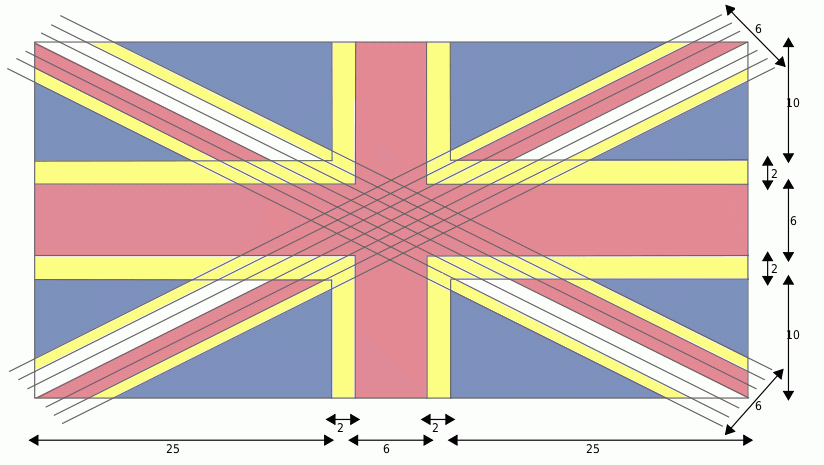The 1707 Queen Anne Union Flag
In 1603, King James VI of Scotland became James I of England and brought about the union of the Crowns of the two countries. On April 12, 1606, he issued a proclamation which introduced the first of three major versions of the Union Flag. It was composed of the “Red Crosse, commonly called S. Georges Crosse, and the White Crosse commonly called S. Angrewes Crosse, joyned together.”
The width of the Cross of St George and that of the Cross of St Andrew are the same, as they represent the equal status of England and Scotland in the Union.
On April 17, 1707, Queen Anne issued a proclamation which spoke of the use of the Union Flag “at Sea and Land.” The Queen Anne version is almost identical to the flag of James I, but not exactly. The width of the fimbriation was changed slightly.
From this time on, the Union Flag began to appear on forts and in regimental colours. This was the flag in use at the time of the Revolution, and can correctly be referred to as the Loyalist Flag. In fact, the description of the UELAC Armorial Bearings definitively describes it as our flag.
The correct illustration is as follows:

When the Continental Congress of the Thirteen Colonies adopted the “Stars and Stripes” in 1777, forces loyal to the British government continued to display the Union flag during battle. When the United Empire Loyalists left the United States for their new homes in British North America, they brought their flag with them.
The Royal Union Jack became the official flag of Great Britain in 1801 when the cross of St. Patrick of Ireland (a diagonal red cross on a white field) was incorporated in the first Queen Anne Union. The Union Jack is flown in Canada today as the national flag of the United Kingdom and as a symbol of Canada’s membership in the Commonwealth and as allegiance to Queen Elizabeth II. The flag is also flown during Royal visits and along with Canada’s National Flag, on such occasions as the official observance of Her Majesty the Queen’s birthday and Victoria Day.
However, because of the historical connection with the United Empire Loyalists, the second Union Flag – The Queen Anne – continues to be the official flag of the UELAC.
Correct Dimensions
It is not uncommon for the design of manufactured Loyalist Flags flags to be incorrect. The white cross of St Andrew should be the same width as the red cross of St George.

The specifications for the Loyalist Flag are the same as for the current British Flag:

We hope to influence those who make flags to use the correct measurements in the future.